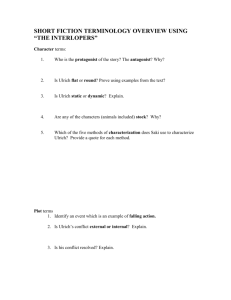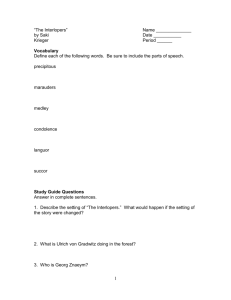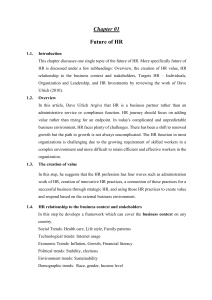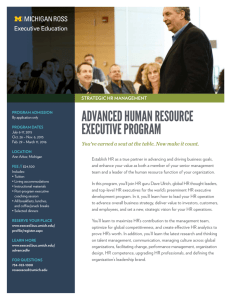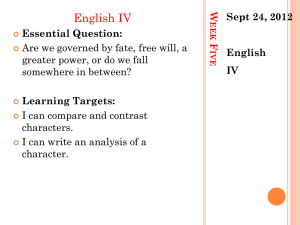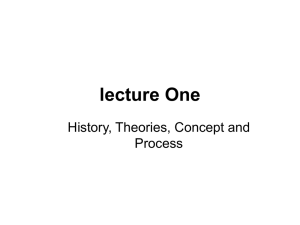Business Strategy for the HR Practitioner
advertisement
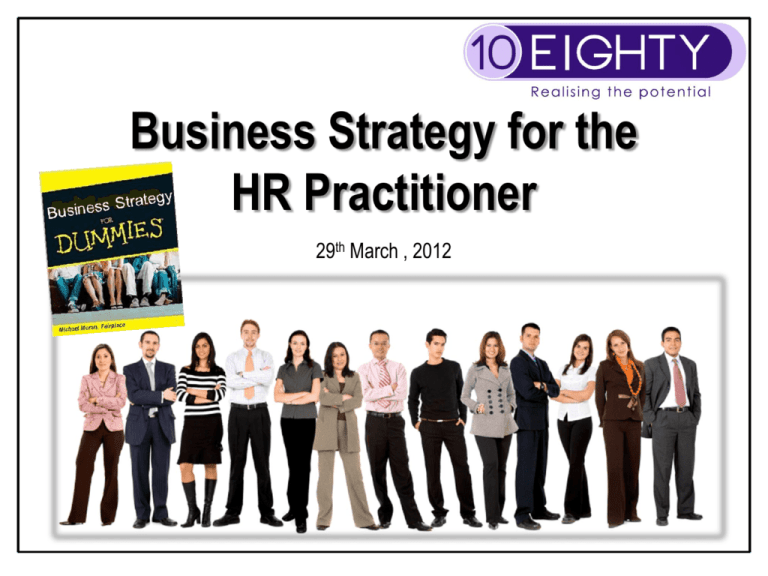
Business Strategy for the HR Practitioner 29th March , 2012 Define strategy: A road map for businesses to go where they want to go How do we get there? Where do we want to be? Where are we now? Alice speaks to Cheshire Cat `Would you tell me, please, which way I ought to go from here?' `That depends a good deal on where you want to get to,' said the Cat. `I don't much care where' said Alice. `Then it doesn't matter which way you go,' said the Cat. The cycle of HRs involvement in business strategy • HR plans in isolation • HR strategy's reactive following business plan publications • HR inputs as an equal partner in strategy formulation Dave Ulrich: What you need to be good at to be Business Partner Strategic contribution defined: Achieving results Effective relationships Communication skills - Culture management - Fast change - Strategic decision making - Market driven connectivity Brockbank W. and Ulrich D. 'HR competencies that make a difference' in Storey J., Wright P.M. and Ulrich D. 2009 (eds) 'The Concise Companion to Strategic Human Resource Management', OU Business School and Routledge, London and New York. Can you identify the business strategy? Tesco vs. Asda Louis Vuitton vs. Burberry BP vs. Shell PWC vs. Deloitte Allen & Overy vs. Linklaters Amazon vs. Waterstones Cirque du Soleil vs. Northgate Arinso Kornferry vs. Digby Morgan Examples of business strategy • High volume, low margin – dominating market share through price and supply chain management • Build market share through acquisition exploiting economies of scale • High value, high margin niches through brand building • Create a new market or redefine old market • Cartels with high barrier to entry – global players with a key focus on service delivery • Niche markets with high barriers to entry Tools and techniques to help determine business strategy Porter’s 5 Forces SWOT Analysis trengths eaknesses pportunities hreats PEST Analysis olitical conomic ocial echnological Kotler's 4 P’s rice roduct romotion lace Threat of new entrants Bargaining Bargaining power of COMPETITIVE power of RIVALRY suppliers buyers The McKinsey 7S framework tyle tructure taff kills ystems hared Values trategy Threat of substitute products Adapted from M.E. Porter; Competitive Strategy, Free Press, 1980. What HR brings to the strategy party We understand what employees want and therefore can build engagement We understand where talent lies inside and outside the organisation We can identify whether an acquisition will be successful/we can put in place the preconditions for a successful acquisition We can create an agile organisation Case Study Savile Group plc (see additional handout) Concluding Remarks •It’s not rocket science •Need to understand your business, your market, your point of competition, what we bring to the party. •The HR imperatives that arise from business strategy Contact Us
